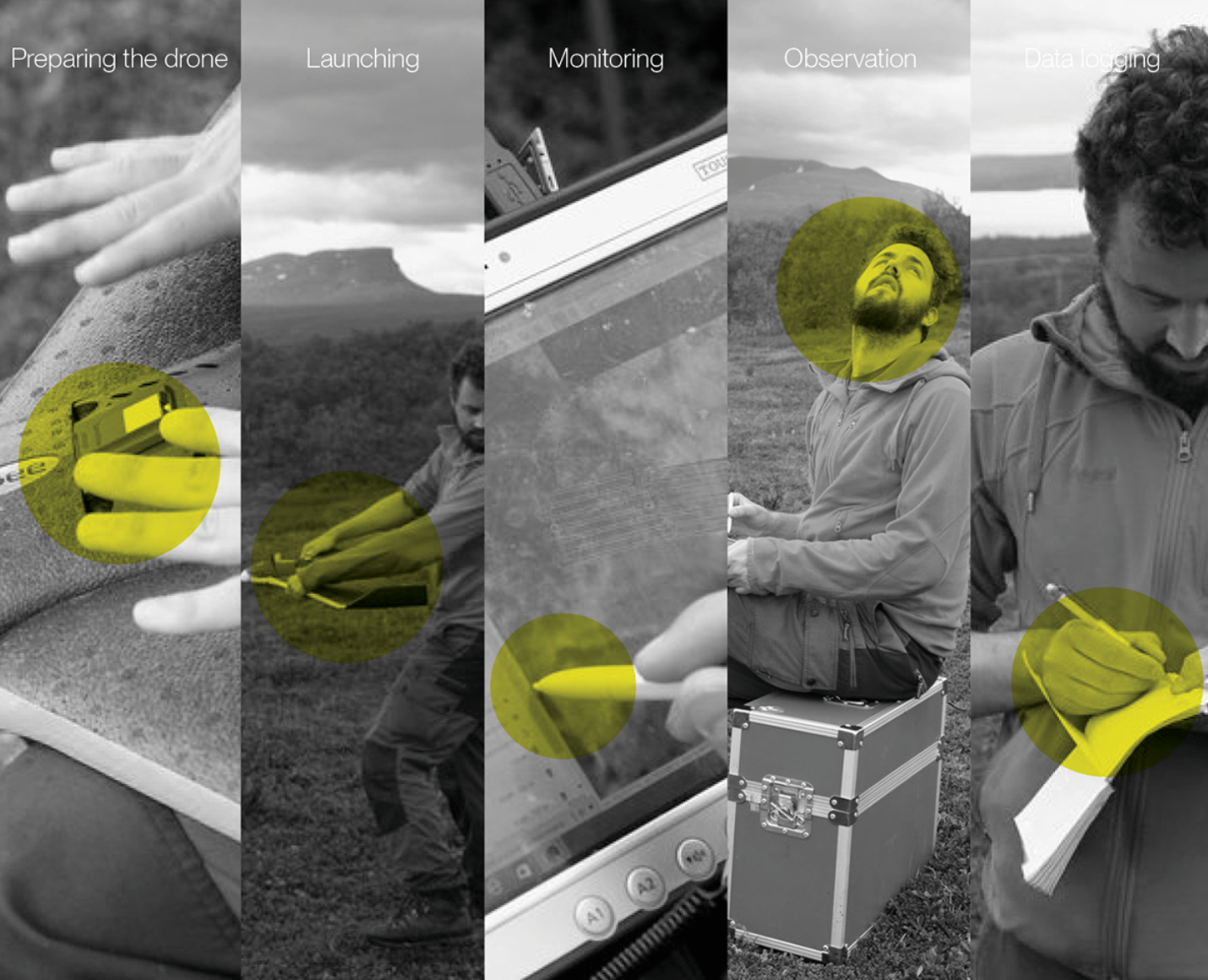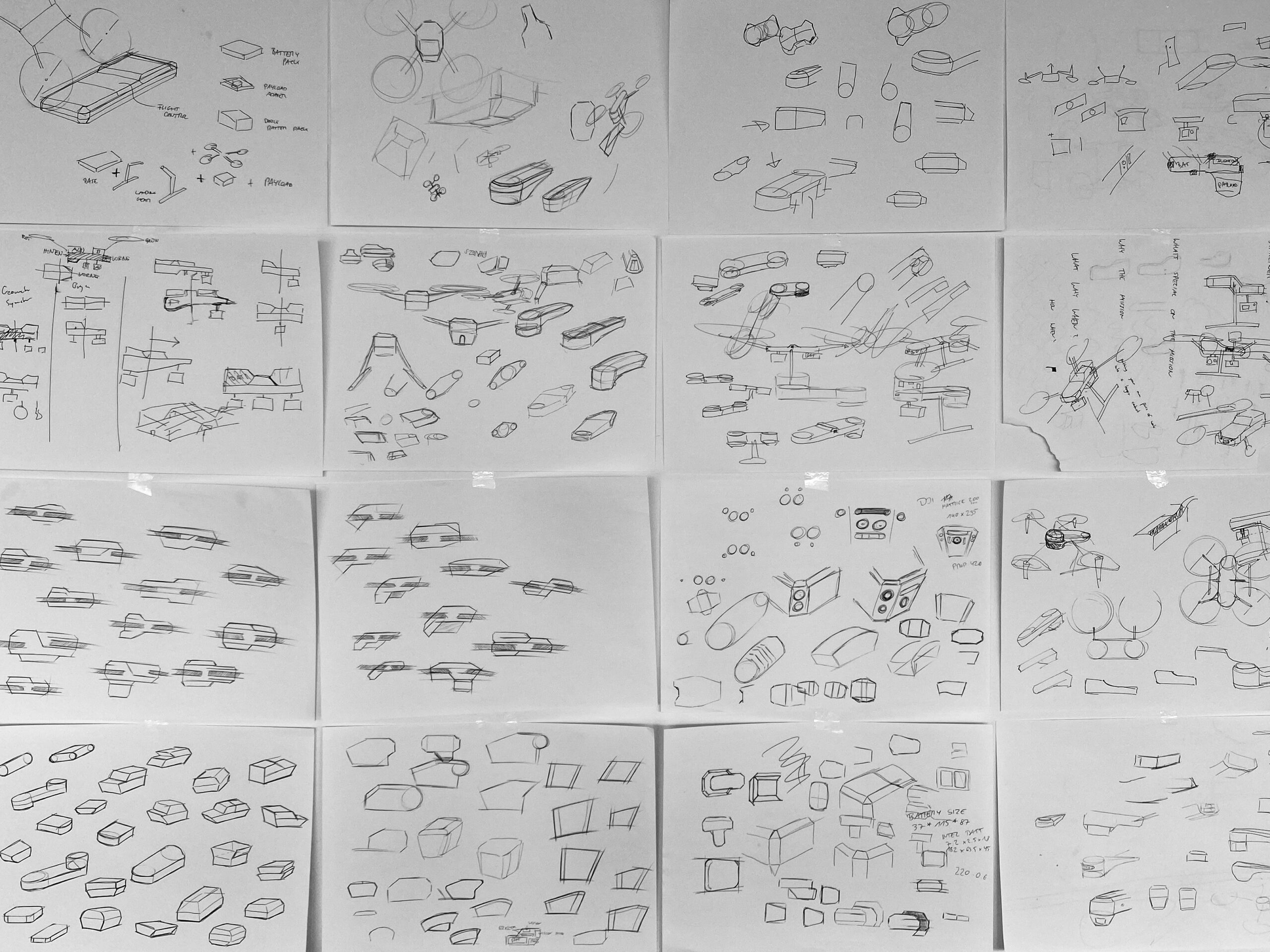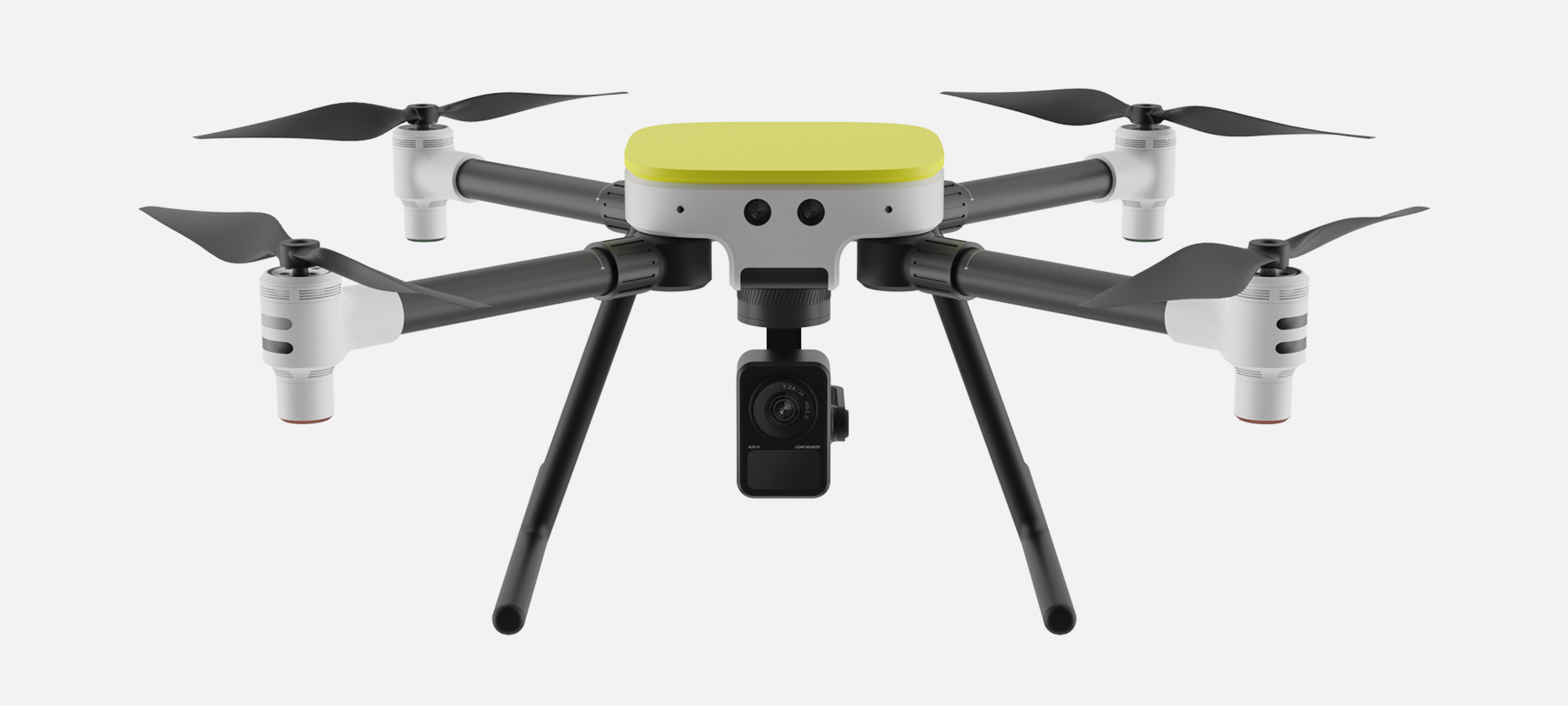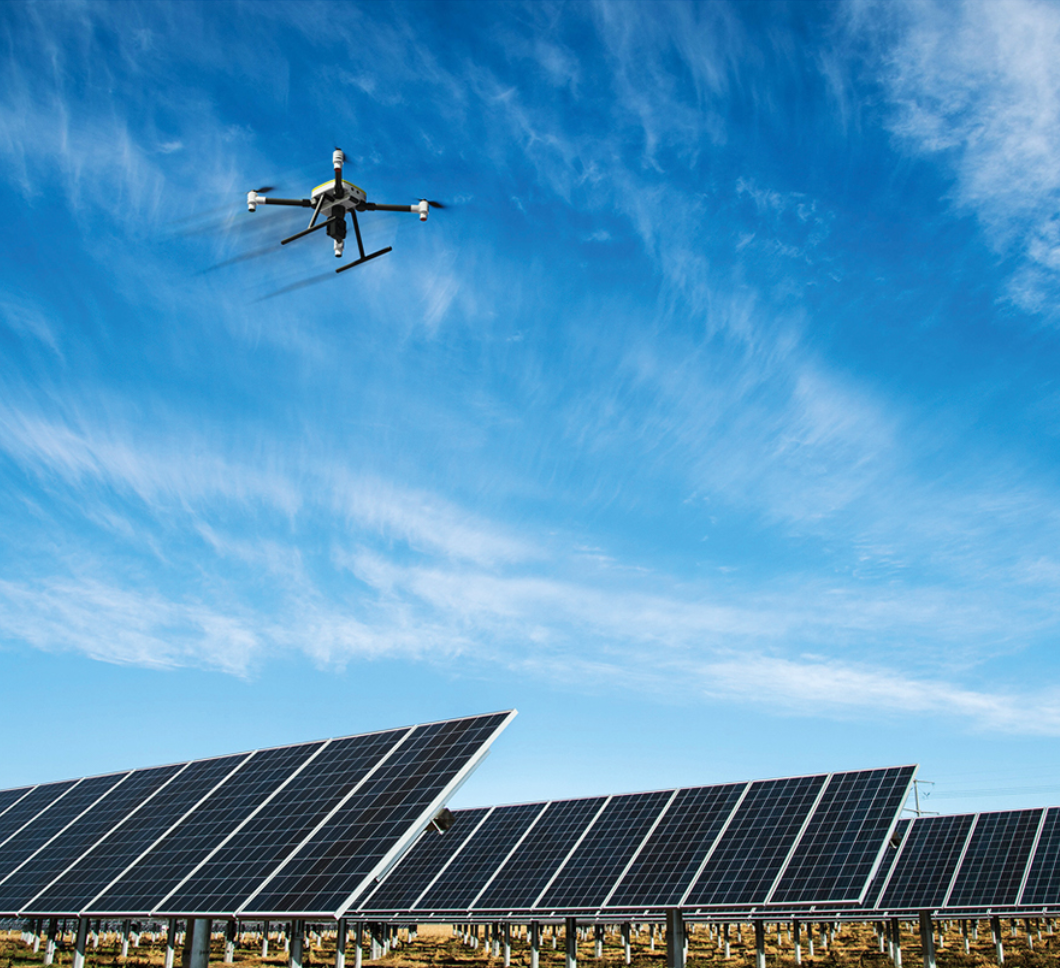Environmental Research Drone
8-week sprint
2021
Individual project
Lund University
School of Industrial Design
Understanding the design and construction of a complex technical device like a drone; understanding of user-journeys in real-life scenarios. With makeshift prototyping and design evaluation during COVID-19 this project resulted in a drone platform design concept for environmental sciences and research.

Background
Drone technology is already widely in use and the market will continue to grow in the next decade. They are used for dull, dirty or dangerous missions that involve avoidable risks and for tasks that robots can do better than humans.
Drones can be used in a variety of applications that help save and protect the environment: wildlife conservation, monitoring and inspection of solar farms, wind turbines and pipelines, sustainable agriculture, crop monitoring, land management and reforestation.

Opportunities
While drones have brought numerous advancements to environmental research, there are still some challenges that need to be addressed. Limited flight time and range, payload limitations and weather sensitivity play an important role in drone design.
Other important aspects are data managment and evaluation, since modern cameras and sensors capture vast amounts of data. Even ethical considerations play an important factor.

Day-in-a-life of an environmental scientist
Special thanks to the experts for their insights, knowledge, help and time to answer all of my questions: Matthias Siewert, Karen Joyce, Erik Sahlée and Lars Eklund

Prototyping
Makeshift prototyping with limited recources during the lockdown; PVC pipes become the landing gear while bluefoam is used for finding the right dimensions.



The detachable rotors are attached to four motor gondolas at the ends of the four arms. They house the powerful motors that lift the drone into the sky as well as lights and sensors that indicate the position of the drone.






©2025 Fabian Reimann. All rights reserved.